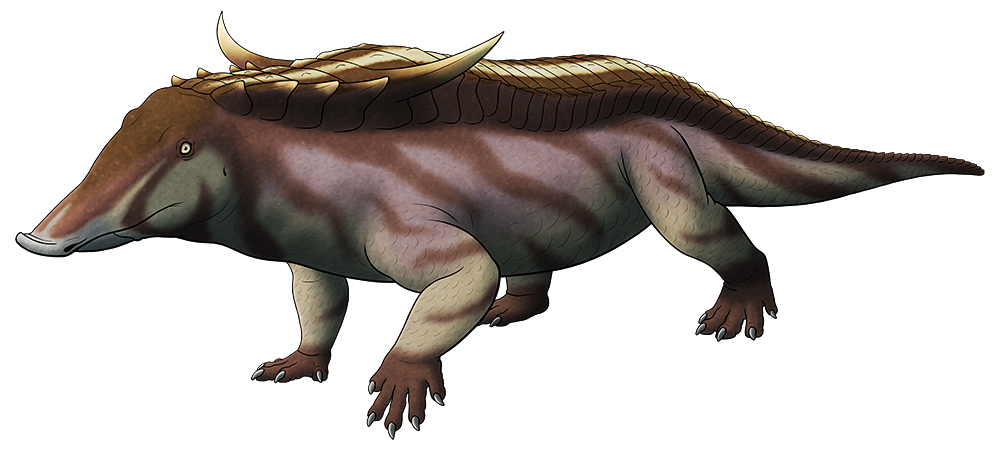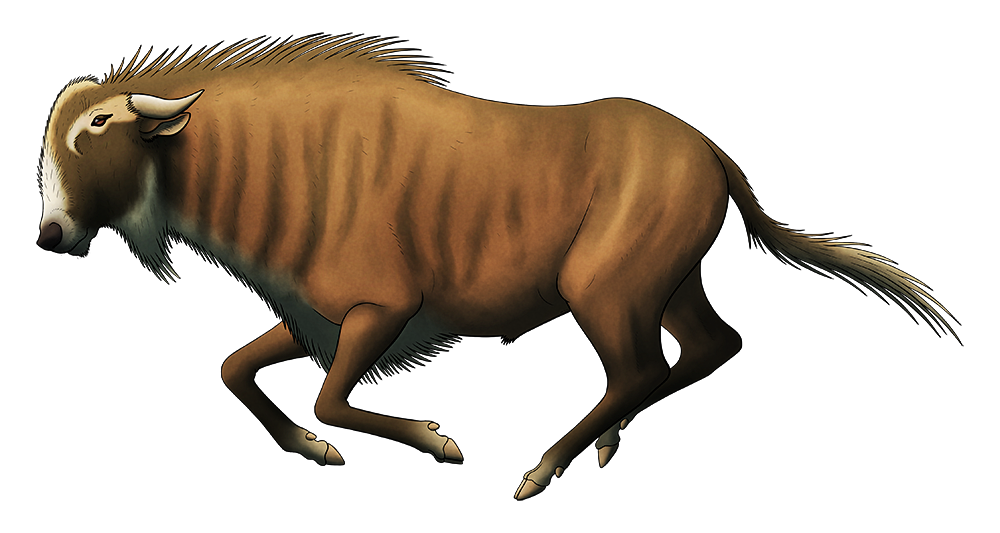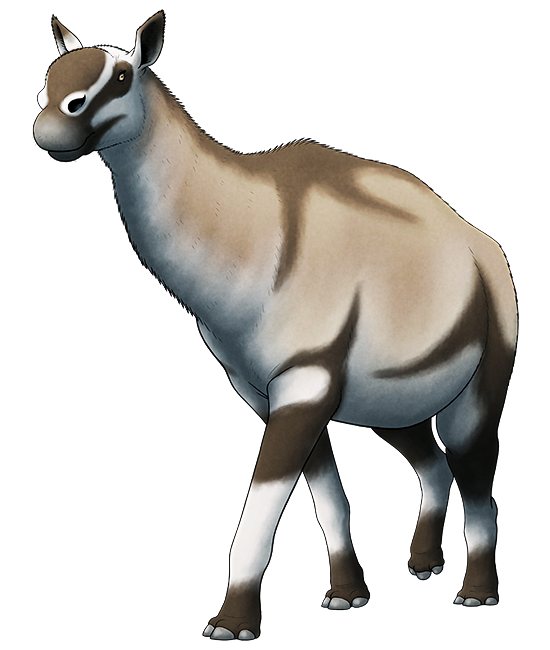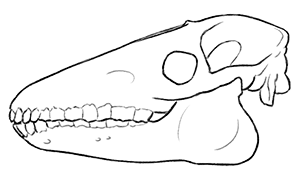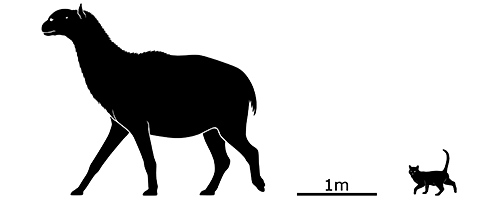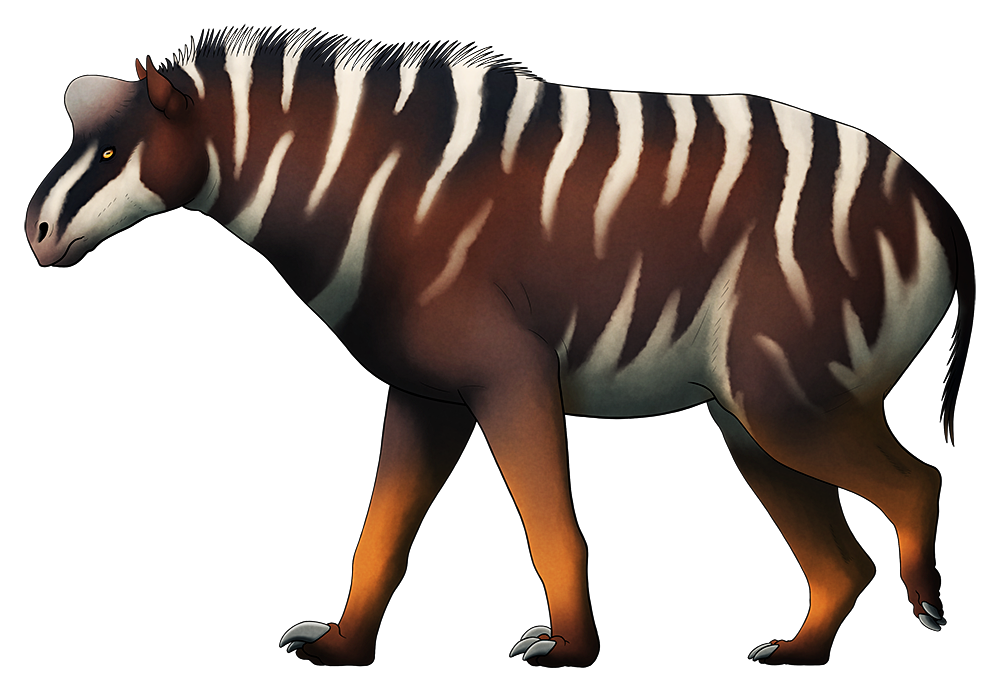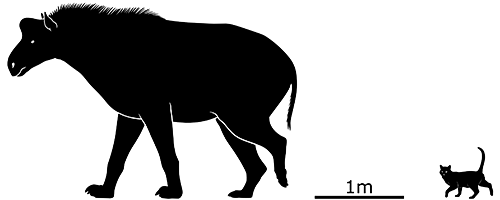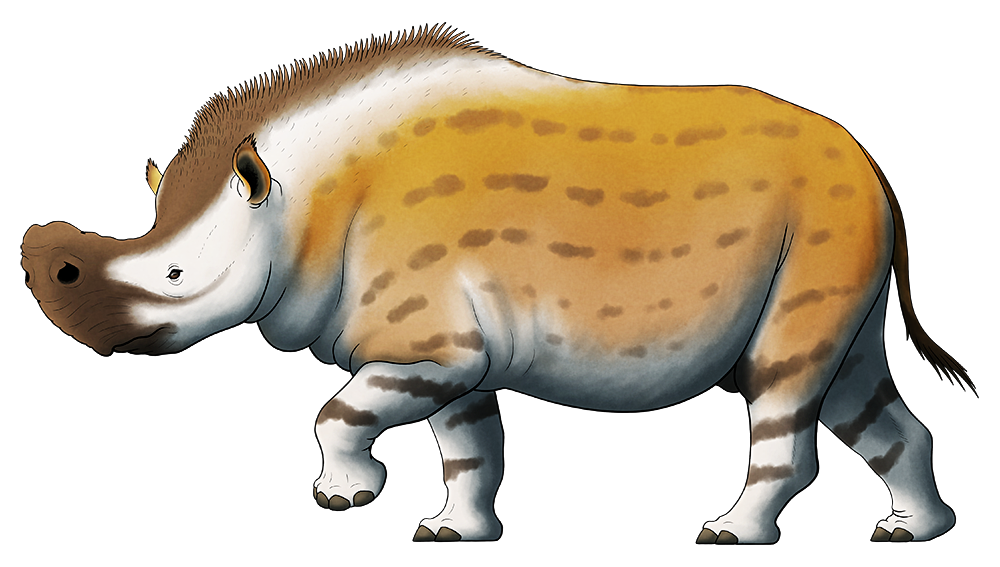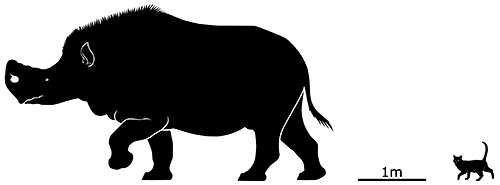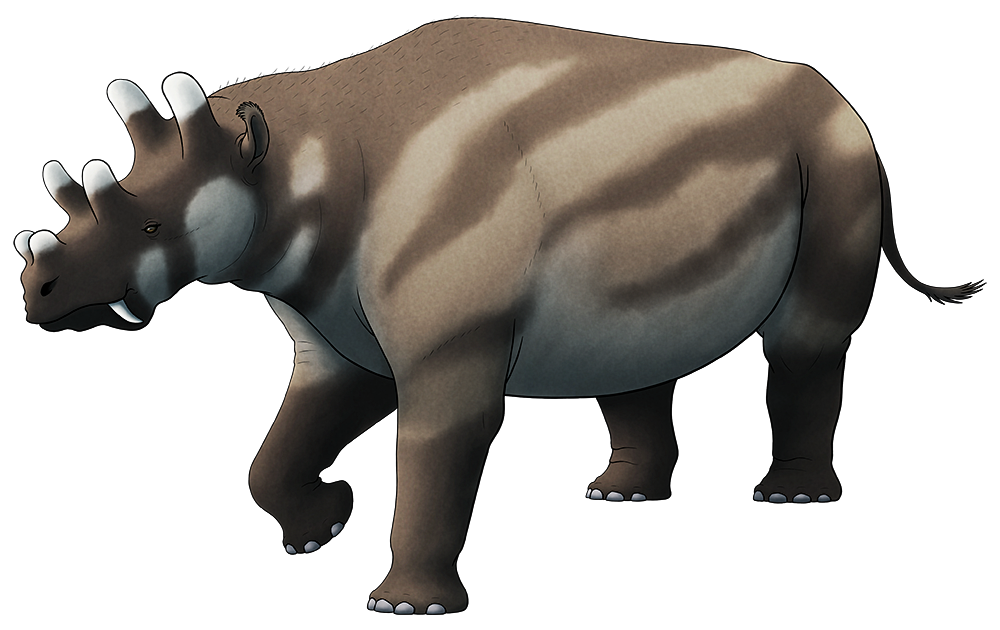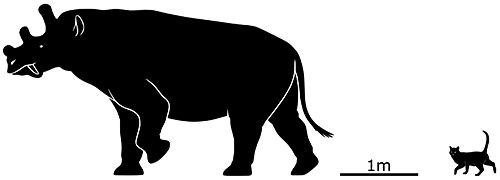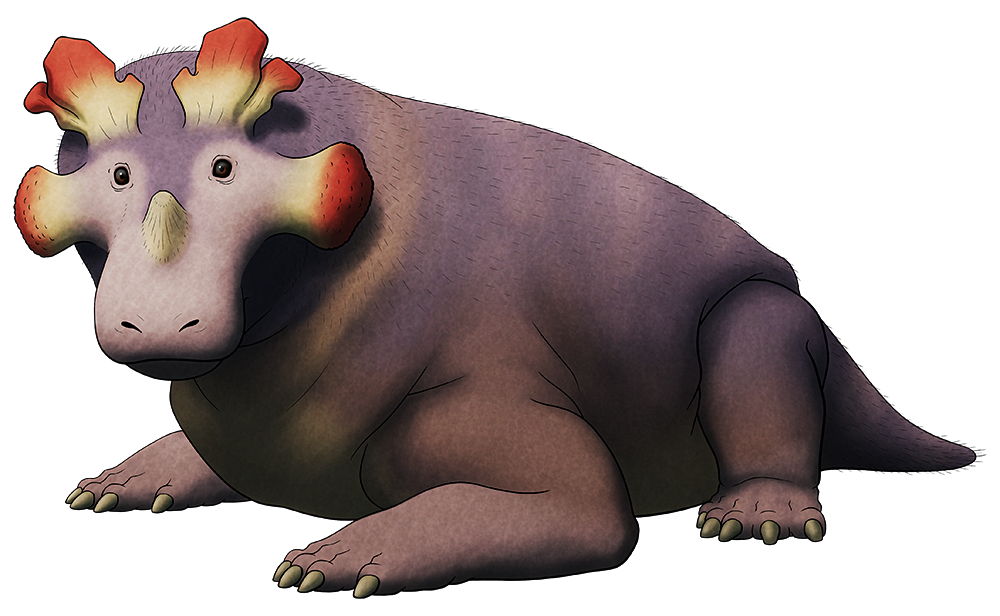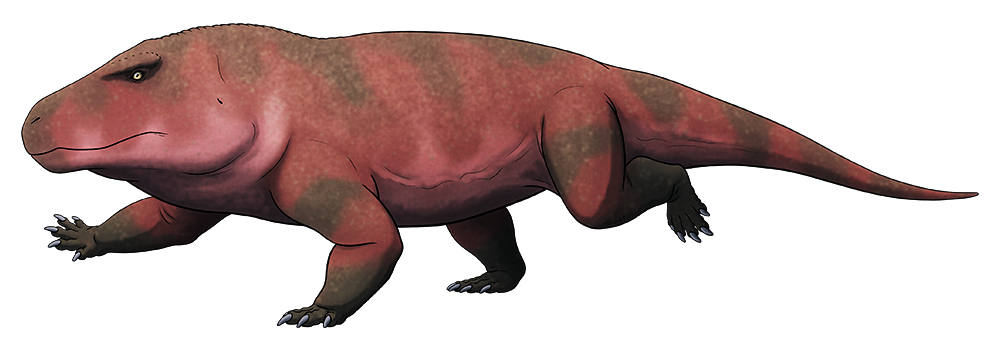There’s already been quite a few Triassic weirdos in this series, so it’s probably not much of a surprise that we’ve got one more before the end of the month.
Desmatosuchus spurensis here was part of a group called aetosaurs, a lineage of heavily-armored herbivorous archosaurs which convergently resembled the later ankylosaurs but were more closely related to modern crocodilians.
Living in the Southwestern and South Central United States during the late Triassic, about 221-210 million years ago, Desmatosuchus measured around 4.5m long (14’9″) and was covered in thick interlocking bony osteoderms that protected its back, sides, belly, and tail, with longer spines over its neck and shoulders.
It had a triangular skull with a few blunt teeth at the back of its jaws and a toothless snout at the front. Its pointed lower jaw probably had a keratinous beak, while its upper jaw had an odd upturned flared tip. What exactly was going on with that snoot is uncertain, but it may have anchored a shovel-shaped upper keratinous beak – or, since there was a little bit of flexibility between its snout bones, possibly even a pig-like nose!
It probably mostly ate soft vegetation, using its shovel-like snout to dig up roots and tubers, although similarities with the skulls of modern armadillos suggest it may also have fed on insect grubs.


